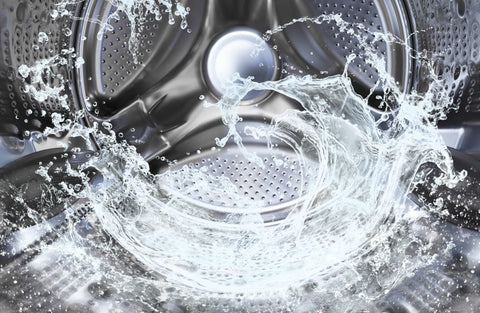
There are actually be two things to be considered when it comes to waterproof jackets and outerwear:
- How waterproof is this jacket?
- How breathable is it?".
There are technical answers to both of these questions, but first, start by asking yourself:
- What is the weather like?
- What sort of exercise am I planning on doing?
If it is raining or snowing, the jacket has to be waterproof. The harder the exercise you are doing, the more important breathability becomes.

How is a jacket's waterproofing rated?
Waterproof ratings refer to a material’s ability to withstand water pressure. This is measured in millimetres. The smaller the area that is subject to water pressure and weight, the more waterproof the membrane needs to be.
For instance, if a person is on their knees in a pool of water, the waterproof rating of the membrane fabric under their kneecaps needs to be 13,000 mm to keep their knees dry. When weight and pressure are distributed over a larger area, a smaller rating is enough to keep you dry. For example, if someone is sitting on a wet ski lift, they need clothes with a waterproof rating of 5,000 mm.

How is a jacket's breathability rated?
If a membrane is said to be “breathable”, it means that the material allows water vapour (from sweat) to pass through it. The higher the figure, the more breathable the product is. Breathability is rated in grams per square metre per day (g/m²/day). The figure says how much vapour can pass through a square metre of membrane fabric in 24 hours.
In other words, if the breathability rating of a fabric is 15,000 g/m²/day, it means that approximately 15 litres of vapour escapes it in 24 hours. How different users experience breathability depends on their metabolism, activity and clothing, as well as the weather conditions.
What does this mean to you?
In order for your waterproof jacket to meet the demands of its intended purpose, the waterproof and breathability ratings have a very important role to play:
- Waterproof and breathability ratings that exceed 15,000 have been designed for active use in extreme conditions, without compromise. The jacket will be extremely waterproof and breathable, suitable for heavy rain. It also wicks moisture away extremely well. Taped seams ensure that a product is truly waterproof. (See: Men's or Women's Juonto Jacket).
- Jackets with waterproof and breathability ratings of over 10,000 are comfortable to wear in rainy weather and when doing sports. They are excellent at wicking moisture away and should also have seams are taped. (See: Men's or Women's Forter Jacket).
- For light and moderate outdoor exercise in normal conditions, jackets should be rated at least 5,000. These products should also come with taped seams.
- Ratings of less than 5,000 means that a jacket may have material that is completely water- and windproof, but still breathable. However, the products themselves are not fully waterproof, because the seams are either partly taped or not taped at all. These are an excellent choice for daily free-time activities when you need protection against rain and wind, without forgetting breathability.
- If the rating is less than 1,500, the jacket is considered water-resistant, not waterproof.
The surface of your waterproof jacket should stay dry in order for moisture vapour to pass freely out. Therefore, a water-resistant treatment is applied to the surface of the jacket. Raindrops are not absorbed into the fabric, they drip away, keeping the surface of the fabric dry.

Important product care knowledge:
This treatment wears out and even disappears when clothes are washed, and the product can start to get wet even from small amounts of water, creating a water shield on the surface of the fabric. This, in turn, prevents perspiration from escaping. As a result, moisture condenses on the inside and makes the user’s clothes damp. People often think that the piece of clothing has let water penetrate, but in reality, it is the moisture of the body that stays inside the product. That is why a water-resistant treatment should be regularly applied. Read the instructions carefully and only apply the agent to a clean surface, particularly if you use easy-to-use sprays.
Source: Halti
For cleaning and repel care, we recommend Grangers care products.